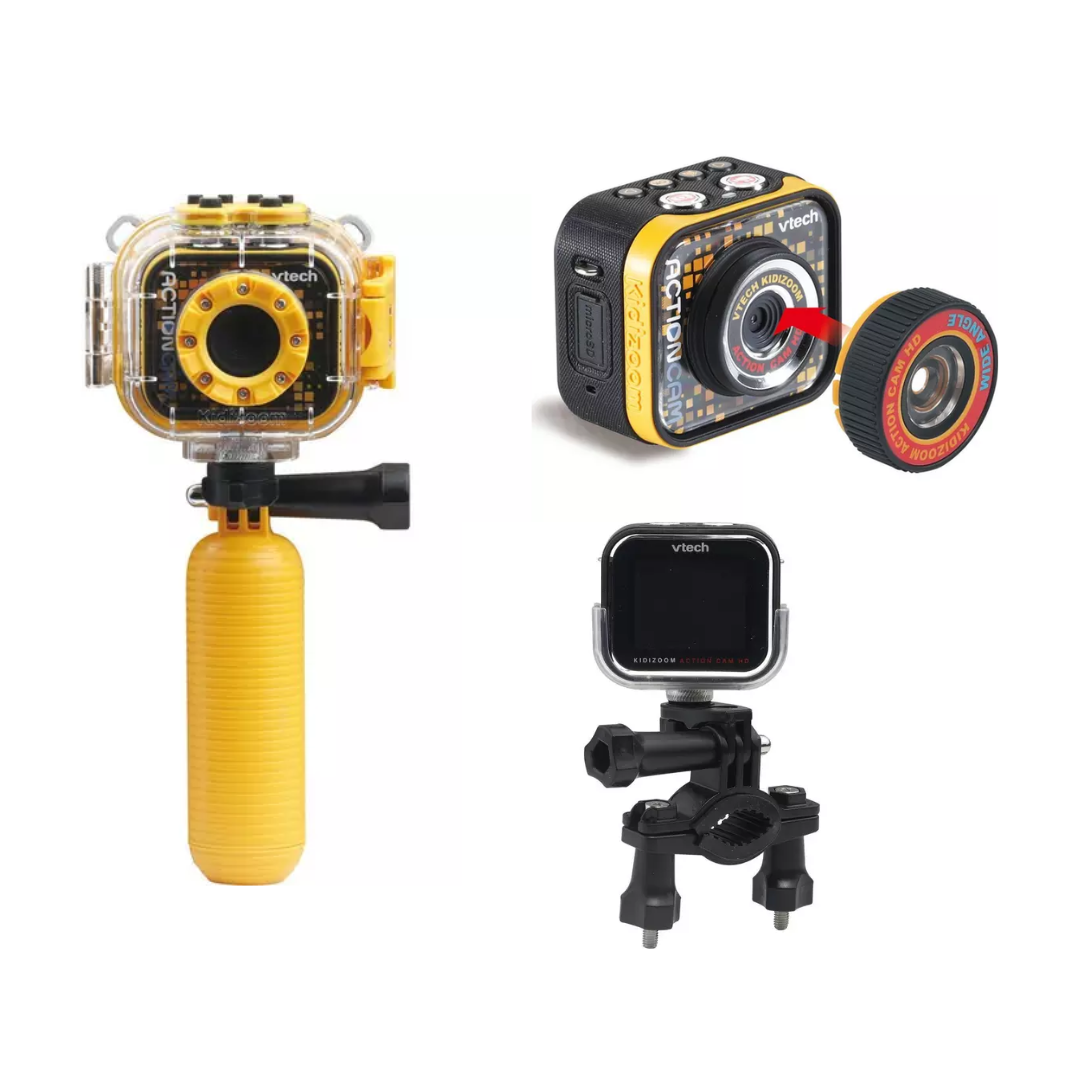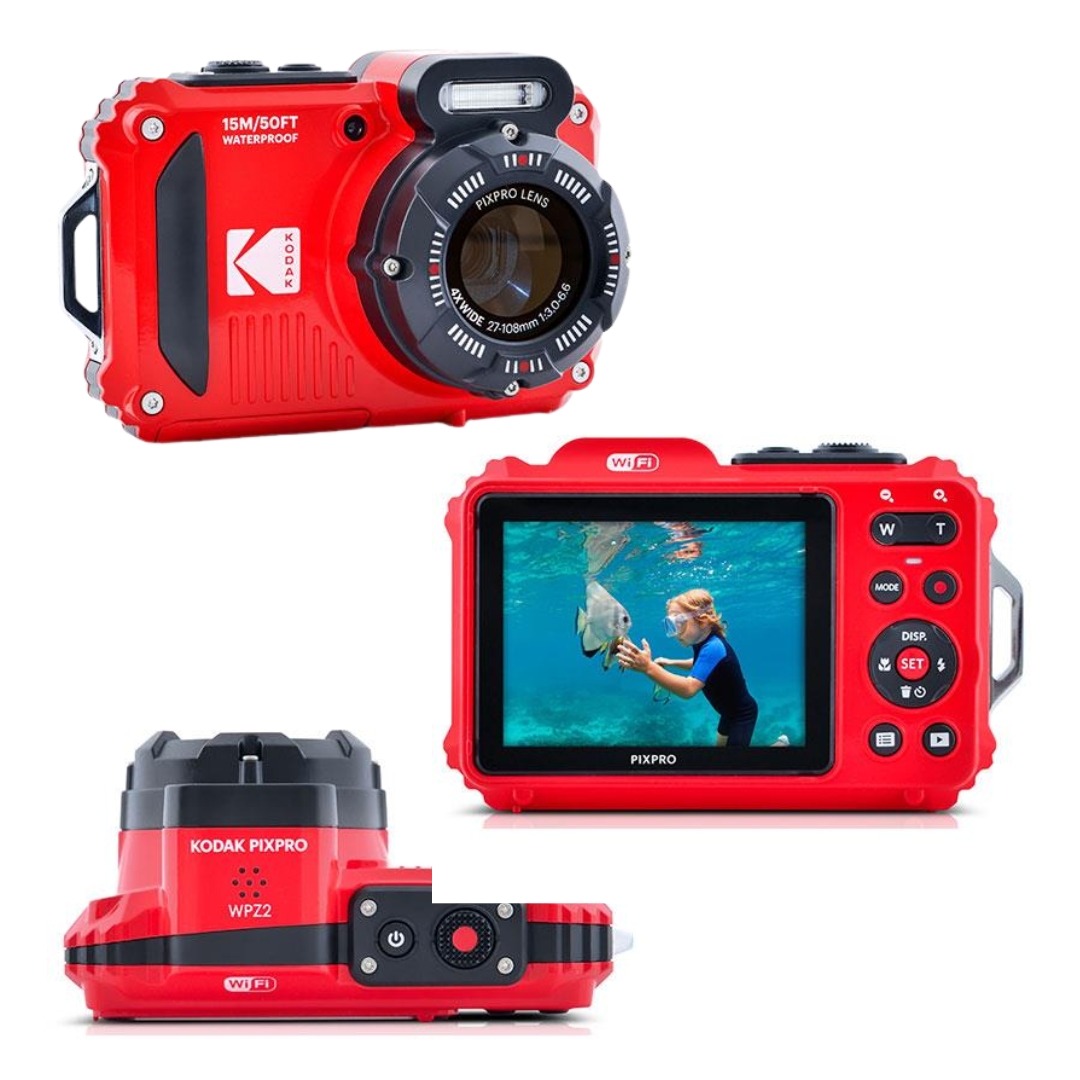How to pick the best camera for your child
It's no wonder really that if you as a parent are forever waving your camera around and your child sees how much pleasure and joy it brings you, that they will want to imitate you and ask for a camera of their own. In some cases, gifting them their own camera may actually help breaking through resistance that kids can develop if they are being photographed too much ( the Photographer's child syndrome is real! ). Whatever your reason, we can certainly help with narrowing down the best option for your child - because spoiler alert - much like there is no one single best camera choice for you, the same applies to kids.
When selecting a camera for a child, these are the factors to consider:
1
Your child's age
Your child's age will be a deciding factor in camera selection. A toddler will benefit from a simple, durable camera that can withstand a few drops, has an easy grip and minimal controls, while older kids will want something that will be more customisable and produce better, more grown up quality photos. This is why we've broken our recommendations below by age.
2
Durability and Safety
Kids are clumsy. A lot of the photography equipment aimed at adults is really quite fragile. So for me, especially as far as the younger kids are concerned, a camera that's durable and shockproof is a complete must. Also, ensure that the camera is safe, with no small parts that could be a choking hazard for younger children. Bonus points if the camera is also waterproof ( which many of the shockproof ones are)
3
Ease of use and ergonomics
Look for cameras with straightforward, intuitive controls. For younger kids the fewer buttons to (accidentally ) press the better but even older kids can become overwhelmed and frustrated by unnecessary amount of complexity and may discourage a child from exploring photography further. Size is also a considerations The camera should fit comfortably in the child's hands. A bulky camera can be difficult for small hands to hold, while a very small one might be challenging to operate.
4
Screen and Image Quality
While you don't need professional-grade image quality for kids, a decent resolution will help keep their interest alive as they see clear, vibrant results of their work. Tiny , poor screen can also make it hard for them to see what they're doing
5
Extra Features
Some of the specifically kid oriented cameras come with additional games which if you ask me are a bane of those models. Every parent I know whose child has one of these complains that the kids prefer to play on the cameras than take photos and while there is nothing wrong with playing games, that's now why you're buying a camera. On the other hand, filters and fun special effects are something that might actually be fun for the to use alongside taking photos so these are a bonus.
6
Digital or instant
Lastly, you need to consider how the children will get the photos off the camera. Polaroid-style instant cameras have made a comeback in recent years, and can be a great choice for kids who want instant results that they can hold or stick to their wall. On the flip side - these cameras are often larger and heavier and the cost of printing inserts can mount up quickly.
So with all that in mind, what do we actually recommend?
For Younger Kids (Ages 4-6)
It is honestly hard to wholeheartedly recommend a camera in this category because what I would like from a camera for this age : sturdy, shockproof, easy to grip and small casing, large bright screen, simple controls, rechargeable battery and decent resolution with some extra fun features and at a pocket friendly price does not seem to exist. While Vtech Kidizoom cameras seem to lead the market in this category, they may have forgotten to update the cameras in the last 10 years because the design has barely changed in the last decade and the outcome isn't really good enough to print. VTech are trying to make up for it by adding games into the camera and from what I've observed, that's what kids actually use this for. For the price, I think it's just not worth it - in my personal opinion anyway. I find that camera often on top of 'recommended' lists and I think anyone who puts in on top has not actually held or tried to use the damned thing.
Instead I'd pick :

MyFirst camera 3 - £72
It looks cute and is easy to hold. It also comes with a shock absorbing silicone skin that makes it even easier for little hands to hold and comes in a few fun colourful designs.. The screen is bright and the photo resolution actually decent at 16MP. It records both video and still images. It has a rechargeable battery and comes with memory card and lanyard. It also includes fun filters and templates that the younger kids will like to play with. MyFirst is a company that specialises in electronics for kids and this is the third version of this camera - each one bringing genuine improvements.

Kidamento - model C - £49
Kidamento is a company that specilies in kids cameras - they developed a few models for different age ranges and their model C is aimed at the youngest age range. They come in super cute designs that should delight your kids and while the image quality is again average at best, it's perfectly usable. I like that the lanyard doubles as a charging cord and a data cable so you're not hunting for items. My minor gripe with is is that the memory card is built in which means that if it fails, you can't easily replace it. Bear and Fox designs sell at £49.99

YunLone - £36
Let's face it, toddler's attention is fickle and you may not want to spend much on something that may be forgotten in a few short weeks or days. If you type 'kids camera' into amazon, you will see a flood of cheap brightly coloured, usually no brand cameras. They are colourful, cheap and cheerful with reviews to match that price. If you're not keen on spending too much money on a hobby your kid might want to drop after a short while, it may be the right way for you but I'd look carefuly at reviews before spending your money. The one camera that stood out for me in the sea of multicolour plastic was YunLone - small and simple enough to operate, with large controls and shockproof body and zoomable lens and at a price point that's not too hard to swallow.
For Older Kids (Ages 7-10)
At this age the kids expect a bit more from their tech ( the youth of today, tsk tsk....) but can also deal with a bit more complexity to the camera settings.

VTECH KidiZoom Studio Compact Camera OR Action Cam
This is still not the camera to choose for it's image quality - it can only do 5MP - but it's fun for kids to use and play with, the little selfie mode helps them take photos or videos of themselves, like it's other version it does include special filters ( yay) and games ( boo). For the price it's a decent option for the younger end of this age bracket. Alternatively, YOu might also consider the VTech Action Cam which is smaller and designed like an action camera - essentially an entry level gopro. Similarly to the studio model, the resolution is not its strongest feature but as an entry to action cams this is a decent option for its price.


Kodak Pixpro WPZ2
Ok, so this is not technically a 'kids' camera but it fulfills most of my expectations of what a starter camera for a young user should be - it's shock and water resistant ( it can shoot underwater without any other case needed) , the screen is bright, the image resolution is pretty good for a compact ( 16MP) , it's small and light and there are not too many controls for a child to use. It also comes in bright colours which let's face it is a plus with kids. Built-in flash can help with poorer light situations. For children who are more advanced in their skills, the camera allows you to switch between Auto, Program and Manual mode ( no priority modes) and control Shutter speed, focus and ISO independently. Bonus - it's got wifi connectivity built in, so you can easily transfer photos to your phone. I think this camera would suit a tween-teen as well.

Kodak Printomatic or Kodak Smile Digital Instant Print Camera
My last suggestion in this range is an instant camera - unlike a lot of other instant cameras it's pretty small and slender and the cost of the refill paper is not eye-watering. It will be a great option for those kids who like to be able to see the images in real life and display them straight away. At £56 with paper refills at £12 for 50 units, it's reasonably budget friendly too.
Be aware though that there is no screen - your child will have to look through the viewfinder so if they're used to a screen, choosing the Kodak Smile may be a be a better option as it features a small screen at the back. The operation is a little more fiddly though and it's a bit more pricy so you need to weight up what you need from it most.
( by the way - be warned - there are lots of cheap and colourful kid specific instant cameras on amazon - which sounds excellent until you realise they all only print images in black and white)
For 11+ and Teens
For tweens and younger teenagers, the options widen to the point that it's worth considering getting them an actual grown up camera. Depending on how much you're willing to spend and how much they are actually interested in photography, there is lots to think about. In my suggestions I'm assuming you do not wish to spend more than £300 in total ( and preferably less) - although of course you may want to throw more pennies that way if you want to. I also assume that your child will want a level of customisation of settings - moving beyond auto.
I stand by my recommendation for Kodak Pixpro as a 'tough' and waterproof advanced compact - I think it will suit this age range as well and has enough complexity to get a child started on learning the camera. Especially as something you may want to take out on holidays or daytrips, this will be a great choice.
If you want something with more complexity here are other options I'd recommend:

An advanced compact
No detachable lenses, but more 'pocket friendly' although still allowing them to change settings and learn how a camera works.
I'd recommend looking for a second hand Sony Cyber-shot RX100 or Panasonic Lumix DMC-GX7 both of which which are pretty solid cameras in this range and which you can get second hand from around £200.
They are both around 10 years old at this stage but they still hold out well against similarly aged competition.
An older DSLR or mirrorless
If there is an older DSLR or mirrorless lurking in your cupboards, passing it on to your child would be the obvious choice.. But if you don't have one, there are some options to consider.
Budget £100 - £200
You are looking at cameras at around 10 years of age in that budget. This means that while they will have all the key settings, they may be a bit poorer in low light as that's one feature in modern cameras that have really improved in the last decade and they will lack the more advanced focus features we have seen added to the newer cameras. They are still perfectly useable, especially by a young learner.
Having reviewed the specs on similarly aged entry level DSLRs and mirrorless, my choice would be mirrorless - especially from either Olympus and Panasonic. 10 years ago they were on the cutting edge of that technology - way before Nikon or Canon dropped their first mirrorless cameras and when compared side by side with similarly aged Nikon or Canon DSLRs they are looking better.
Olympus OM-D E-M5 or Olympus OM-D E-M10 Mark II are both tiny mirrorless cameras with really decent spec for their age - they will do well enough in low light and have easy to master menu and settings and you can pick them up second hand from around £180 - sometimes cheaper if you can catch the right offer. A second hand kit lens ( like this Panasonic 14-42mm F3.5-5.6 or this Olympus 14-42mm f3.5-5.6 will set you back around £50-60) - FYI Olympus and Panasonic have interchangeable lenses - ie you can use Panasonic lenses for Olympus and vice versa.
Alternatively, you could consider a cheaper Olympus Pen rangefinder range - these were designed as the entry level cameras in the mirrorless micro 4/3 ranges and they perform pretty well too ( as well as looking good). My main issue with them was that they lack a viewfinder and rely on the back screen only. Having said that, my teenage daughter actually preferred that.


Budget up to £100
If you would like a camera under £100 mirrorless are out of the question - I'd be looking at Nikon d3200, Canon 100d or Pentax K-r. Again, a kit lens for any of those cameras can easily be found for under £50. They were really successful beginner models at the time and while compared to current entry level cameras they fall behind in the low light sensitivity stakes and less advanced focus, they will suit a younger learner well. A bonus of owning a DSLR is always a large pool of second hand lenses available to them as well.
By the way, if you want to check a camera's age and how it compares to other models from that line, check out their Wikipedia Template page. Here is one for Nikon Dslr, Canon, Olympus & Panasonic, Fuji and Sony.

Ready to learn your camera and how to photograph your children beautifully?
you need this:
Photography for Parents
Fundamentals
6 week online Photography course which gives you all the necessary camera know-how skills as well as the foundation in composition, light and photographic storytelling - all with a focus on photographing children. This means - no more fumbling with your camera at the crucial moments and being able to capture your children naturally, in their own environment, for exactly who they are. It's a no-brainer for any parent who wants to be able to capture memorable, treasured photos of their children!
